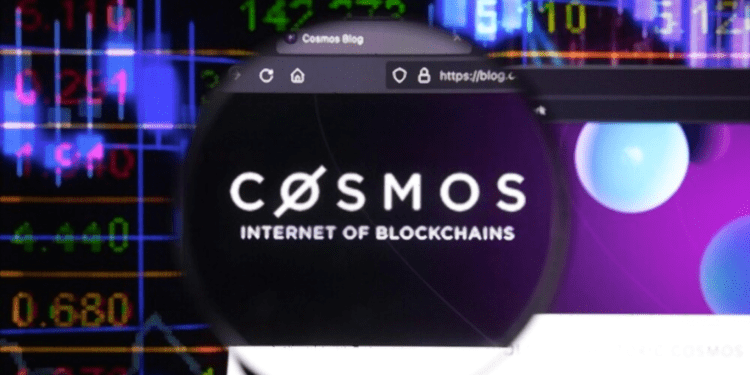The Cosmos blockchain network boasts an ever-expanding ecosystem where interconnected blockchains can thrive together and remain independent.
The network has aided the development of over 260 dApps and services, including Terra, Binance Chain, Crypto.org, and the Cosmos Hub.
According to their website, Cosmos is the first entirely free platform to achieve a web in which value is “exchanged, stored, and secured between parties, without relying on centralized servers, rather than created for all and utilized by a few.”
Advantages of the Cosmos Blockchain
Developers Empowerment
Cosmos empowers developers by allowing them to build entirely autonomous application-specific blockchains that can easily interconnect rather than existing as smart contracts on another chain.
They can make their rules, choose consensus protocols, opt out of inherited transaction fees and achieve scalability. Cosmos’s interconnectivity system allows apps to exist on various blockchains and still interact.
Instead of competing for throughput, they can thrive independently across sectors like DeFi, Metaverse, NFTs, and DAOs and promote the sustainability of blockchain technology.
Organization and Marketplaces
The Cosmos blockchain gives power to the community, and resources are shared among members. Autonomous organizations within the ecosystem allow individuals to use their tokens to vote on decisions that determine the scope of governance.
Users on the blockchain network also get unrestricted access to marketplaces and exchanges for permissionless global trading.
Social Network
A system where every user has a voice and a free flow of information, unhindered by censorship, is present on centralized platforms. Cosmos encourages communities to form autonomous social networks where each user creates value and benefits from the value others create.
Cosmos Hub – The First Blockchain on Cosmos
At the heart of the Cosmos, the network is the economic center- Cosmos Hub. Cosmos Hub was the first to be launched among the hundreds of thousands of blockchains operating in the ecosystem.
It was designed to be a service provider to its connected chains. The Cosmos Hub acts as a decentralized marketplace with a wealth of value-backed assets, a decentralized exchange, bridges to other chains, and a secure custodian of digital assets.
The services provided by the Hub have become a driving force- providing reasons for other sovereign chains to connect and transfer assets to it, steadily driving its utility.
On the Cosmos Hub, transactional activities are carried out using the native token, ATOM. In return for staking ATOM, holders are rewarded with transaction fees and staking benefits.
The Next Phase for Cosmos Hub- Cosmos 2.0
Early last year, Cosmos completed its whitepaper, achieving its vision of creating blockchain interoperability, usability, and scalability detailed in its 2016 roadmap.
It became the infamous “Internet of Blockchains” and witnessed a tremendous increase in transaction-related activities, blockchain development, and the creation of decentralized applications.
For the Cosmos Hub 2.0 roadmap, the network focuses on “enhancing Cosmos Hub functionality by focusing on key areas like liquidity, economic security, usability, and participation.” More like polishing the rough edges to make its economic center and the core of its ecosystem better for community members.
The duration of the Hub 2.0 roadmap is expected to start from the Delta upgrade- Q4 2021 to v11-Gamma- Q3 2023. Here are a few developments on the new roadmap-
Liquidity Protocols
The two liquidity protocols prioritized on the roadmaps are the Gravity DEX protocol and IBC. The Gravity DEX protocol is a scalable AMM model for token swaps that delivers price consistency and order execution and drives liquidity for tokens on the Hub.
Paired with IBC, it creates a powerful component in cross-chain DeFi protocols.
Interchain Staking and Accounts
Through Interchain staking, validators tasked with securing the Cosmos Hub will also be able to provide security to new chains.
This will increase the number of transaction fees and chain inflation rewarded to ATOM stakers, as validators can also choose to secure separate “baby” chains.
Staking Derivatives To Increase ATOM Utilities
Unlike the previous system, where tokens had to be bonded for ATOM holders to receive staking rewards, roadmap 2.0 allows for collateralizing Gravity DEX swaps and DeFi lending.
This makes it easier for holders to stake their tokens and still enjoy the broader offerings that the DeFi ecosystem provides.
NFTs
As the new phase is being implemented, it is expected that the Cosmos Hub will deploy new initiatives to help better manage NFTs, governance, accounts, and authorization.
The rest of the roadmap and other plans can be perused here to understand better how Cosmos Hub 2.0 is set to impact the future of the “Internet of Blockchains.”














